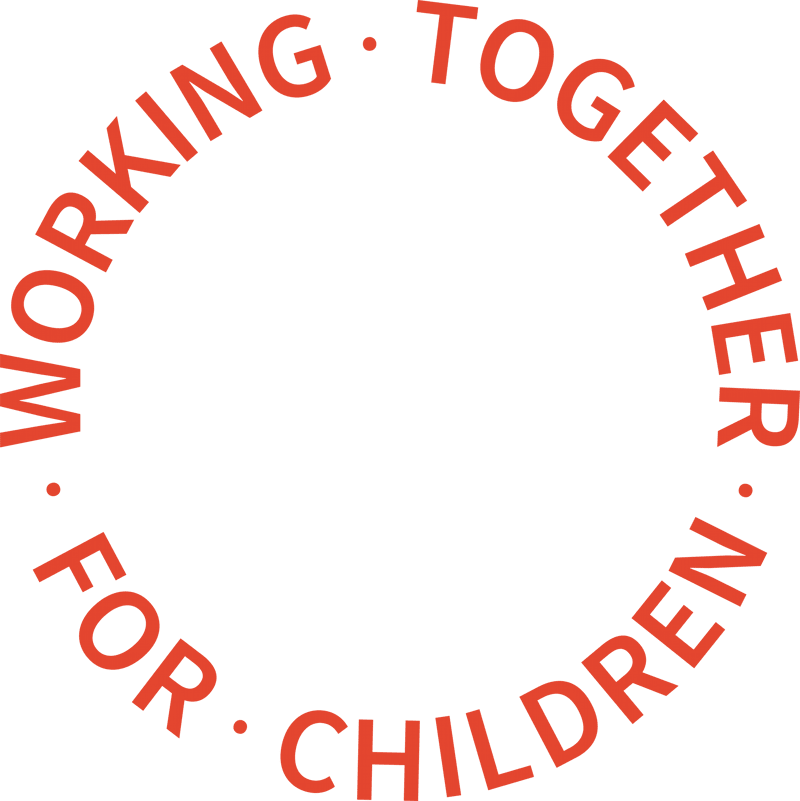Children’s guardian Sue Brookman on how the courts and professionals are coping with the deluge of care applications
Recommendations that local authorities and children’s guardians should be able to work together effectively to agree on decisions about a child’s future in care proceedings are not so straightforward in practice, an experienced children’s guardian has warned.
Independent Social Worker and guardian Sue Brookman says the independence of the children’s guardian is what makes the role unique during care proceedings in terms of ensuring the voice of the child is heard.
“As a children’s guardian, I wouldn’t go into a case and come to an agreement with the parents, so why would I do that with the local authority social worker? Some cases are clear cut whereas in others there is room for a range of opinions which need exploring and explaining,” said Sue, who has worked as a guardian for over 20 years.
The guidance was issued recently by the Association of Directors of Children’s Services and Cafcass “to strengthen the way in which social workers, Independent Reviewing Officers and children’s guardians work together in the best interests of children who are the subject of proposed or issued public law proceedings”.
Fresh set of eyes
It was produced in response to the surge in the number of care applications during 2015-2016 which Cafcass chief executive admitted had become a “major issue” for the organisation. Cafcass received 12,741 care applications during 2015-2016, a 14.2 per cent rise from the same period during the previous year.
The guidance recognises that local authority social workers, IROs and children’s guardians are “all qualified social workers using the same knowledge-base, research framework and case law, albeit with different statutory responsibilities”.
It says: “This agreement represents a commitment to developing a collaborative approach designed to resolve disagreements between the local authority and Cafcass about the social work evidence base being relied on in decision-making.”
“In our view, two social work agencies with the same professional standards and training should be able to agree on the evidence base on which recommendations about the future of the most vulnerable children in the country will be based,” the guidance adds.
However, Sue says: “I don’t agree with a lot of it. Of course social workers and guardians have the same background, but we have a different job. The independence of the guardian is a key factor, that we are independent and not representing a large organisation. You need that fresh set of eyes looking at everything from the child’s perspective.”
‘In the 1980’s, social work wasn’t dominated by child protection’
Sue studied for a degree in sociology before she gained the CQSW in 1981. Her mother had raised her as a single parent which had taught her that “life isn’t always easy” from a young age. Her mother volunteered for the probation service and boundaries were less strict back then meaning that Sue was exposed to different situations including prisoners’ wives coming to the house in tears. This personal experience coupled with her interest in sociology led her to social work.
Her first social work role in the early 1980’s was in a generic social work team in Lewisham meaning her role was “a real mixed bag” from undertaking an assessment of an older person and recommending aids and adaptations, to mental health assessments of adults in an Approved Social Worker role to working with children and families.
Back then, Sue says social work was very preventive and social workers, as well as doing individual work with families would run a range of groups for particular service users for example vulnerable young women, provide drop in surgeries offering benefits and housing advice with a much more community approach and the agenda was “not dominated by child protection as it is now”.
Towards the end of the 1980’s when The Children Act 1989 came into play, social work split into children’s and adults social work and Sue became a senior social worker with a small caseload working with children and families as that was where her interests were. ‘Child protection’ as it is today still did not exist but the teams would be involved in non-accidental injury conferences, although they were still relatively rare. It was only after the Children Act was in place that Sue started going to court more regularly. From senior social worker, Sue became a service manager in a children and families’ team in Lewisham for six years, however, the work became more about managing budgets than social work and so in 1994, Sue took a very tentative step towards working independently.
“At that point, being a guardian ad litem, I had to apply to the Inner and North London Panel which was a completely self-employed service. Even though I had 10-12 years’ experience by that time, I still questioned whether I was ‘ready’ as guardians were considered to be real experts in the field,” said Sue. “I did it gradually, so I worked part-time as a guardian ad litem and I did a job share with my managerial role in the local authority as I didn’t want to give up the security of the local authority initially.”
There is no guarantee of work but at the moment there is a deluge of cases
As a guardian, Sue had to be re-appointed every three years, provide a portfolio of work along with references but the organisation was small and everyone knew each other.
“Social work hadn’t developed at that point as it has now and so I did a lot of direct work with children as that just wasn’t often prioritised by social workers then. I’d get to know the children subject to court proceedings and find out what their wishes were. The idea of Special Guardianship Orders and family options weren’t really investigated by social workers then so as a guardian you would see who in this child’s family could take care of them. It was a bit of a detective role as well,” she explains.
“I really enjoyed it. We did whatever needed to be done and all options were explored. There was not as much pressure on time or cases as it was pre- Peter Connelly but it was a difficult job in many ways,” adds Sue.
In early 2000-2001, Cafcass was introduced and brought together all guardians ad litem, private law applications for contact and all court welfare which had previously been under probation. Cafcass became the “unifying body”.
“Cafcass wanted everyone to become employed but many guardian ad litems had been self-employed for a while and wanted to continue that way so in the end Cafcass agreed to continue with a mixture of employed and self-employed practitioners,” said Sue. “It has been precarious because there is no guarantee of work. There have been times when they have managed with the employed work-force and there has been - limited work available for self-employed. Then there are times like now when there has been such a deluge that they are begging the self-employed guardians to take on cases so it has really varied over the years.”
However, the increase in care applications does not mean that as an experienced guardian Sue is left with more complex cases. She said it is often difficult to tell how complex a case is going to be from the outset and often Cafcass will just inform you of the local cases and check your availability. Sue often has four guardian cases involving 6-7 children and a couple of ISW cases on the go simultaneously, although sometimes the guardian cases can increase to 10. Sue also does some private law cases for Cafcass where there is a dispute between parents about which parent the child should live with or how or when they should spend time with the non-resident parent meaning her workload is a combination of ISW, private law and guardian cases -although she admits the guardian role is very different now to when she first started out and definitely “more procedural”.
“At the Panel, we would have to submit reports, you would be quality assured and you’d be re-appointed every three years. But under Cafcass, there are now endless forms at the beginning and end of each case to satisfy the organisation’s needs,” she adds.
It is difficult to un-make decisions
The role is now more of an “over-seer” explains Sue, with constant checks throughout the life of a case. Initially it is about checking that it is a valid application and should be before the courts, then guardians need to check the evidence for gaps and if there are gaps, they need to ascertain who is needed to fill them. Social workers do much more direct work with children now so the guardians have access to the child’s wishes through the social worker’s evidence so while they would still see the child, it would not be such a large part of the role that it previously was.
Sue explains that the role now is more “case-managing” particularly since the introduction of the 26 week deadline. She admits she was apprehensive about the introduction of the deadline but says that “good has come out of it” and it has helped to focus on cases and speed up decisions for vulnerable children and young people. Guardians now need to meet key people involved in the case and focus on what needs to be done to get a decision as swiftly as possible. “It is still an important role in terms of making sure the child’s interests are at the heart of all decisions, that all options are explored and that there is an independent voice.”
“Once a case has got to court, the local authority often has a view and has made a decision that the child should remain in care long-term. Once they are on that track, it is very difficult as a social worker in a large department to see any other option and there is a tendency to look for evidence to endorse the decision rather than for something different. That is why it is important as guardians that we keep an open mind,” explains Sue. “Decisions get made and it’s difficult to un-make them.”
Sue gives the example of a family of three children under five, the youngest had just been born and the baby had health problems and so it was decided that the two elder siblings would be placed in one placement and the baby would be placed separately to focus on the health needs. Then, once the baby was better, the three siblings would be reunited. However, once the baby was better this never happened and the local authority was of the opinion ‘well we can’t move the baby now’ and planned to place the children separately long term. Sue says that this is where it is important for the guardian to step in and look at the options and what would be in the best interests for those children.
She adds that often when family members put themselves forward to help care for a child they often get ruled out for spurious reasons such as their home isn’t adequate or on health and safety grounds – issues that can be addressed rather than considering their long term ability to provide good parenting and keep the child safe. Again, it is important for the guardian to step in and check what is in the child’s best interests.
Effective play techniques
Cafcass has a range of tools that Sue can draw from when working with children and she uses these along with a variety of her own techniques that she has developed over the years. For those age 5-6 and over, she meets them on their own, potentially at school on neutral ground, as well as with their birth family and foster carers. “It is like a multi-layered assessment looking at how the child relates to key people, what are they like with their birth parents, how do they interact with their foster carers – you need to spend time with them,” she says.
Sue often uses a “bag of feelings” where the children draw a sack and imagine it is them and then talk about what might be inside the sack in terms of emotions. “It is very simple and I’ve used it for ages and it is very simple and effective tool to help children start talking,” she adds.
She is trained and experienced in Story-Stem assessment and uses this technique with children age 4-9 where she presents the opening part of a story and the child continues to act out different scenarios with dolls and toys which can be particularly effective with younger children.
Cafcass states that guardians do not have to visit babies but Sue says she always does as although the babies cannot verbally communicate “you can still ascertain their feelings”. With older children over 10-years-old, she visits the child with their appointed solicitor, who explains their role. The child is a party to the proceedings and given the same status as the parents.
“If, as the guardian, I for example think the child should be placed in care but the child disagrees and wants to go home, the solicitor and the guardian separate and the solicitor represents the child’s views to the court while the guardian will say during the proceedings what they think is in the child’s best interests,” says Sue.
Families get into crisis quicker
She adds that some 10-12-year-olds who she works with are very competent and eloquent and are able to express their views clearly whereas often she can come across 15-year-olds who may not really understand the proceedings. Sue admits that as an older woman, working with teenagers and teenage boys in particular can be challenging and if she was working with a teenage boy, particularly where there are differences of culture and ethnicity, she would think carefully about which solicitor to instruct to ensure they could build a rapport with the child.
As a guardian, she writes a very brief report after 10 days having met the key parties outlining what she thinks initially and recommending what steps need to be taken and why. This is then developed further into a final evidence-based court report including analysis and with any risks highlighted including final recommendations. The guardian’s evidence comes last during proceedings after the local authority’s evidence, the parents and any experts such as psychologists or ISWs. Once everyone has given their evidence, the guardian will say what they think should happen regarding the child and the outcomes which are in their best interests.
Following the court case and after the final order has been made, Sue always used to meet with the children to say goodbye, particularly where the case has been lengthy and she has worked with the child for a long time. However due to the huge amount of care applications going through the courts, Sue says it is not so much a part of her practice although she does try and write to the child.
With regards to the rise in care applications, no one has ascertained the real reason for the increase. President of the family courts division Sir James Munby has said: “We are facing a crisis and, truth be told, we have no very clear strategy for meeting the crisis,” said Munby.
Addressing the causes of the increase in care applications, Munby said he did not believe that child abuse and neglect could rise 14, let alone 20% in a year and said that local authority behaviour must be playing a “significant role”. However further research was urgently needed to make future predictions, he added.
Sue said there is the view among frontline practitioners that local authorities are more worried that unless they play things by the book and bring things to court, that if something goes wrong they will be criticised. There is also consideration that local authorities are bringing cases of chronic neglect to court where they have been intervening for years to help and the situation is not improving. The local authority is asking for a court decision around whether the case is severe enough for the children to be removed as they do not have the resources to keep pumping into cases that are not improving with social work intervention.
“They are bringing cases to court to cover themselves because they don’t know what to do and do not have the resources to provide the ongoing support these families need ,” says Sue.
“After Peter Connolly, every authority was looking at their caseloads and taking an anti-risk approach but that was nearly 10 years ago,” she adds. “The issue is that resources are so stretched and with cuts in welfare benefits and support services such as Sure Start and therefore families are generally getting into crises much quicker and we are seeing the impact in the courts,” Sue concluded.



